Key takeaways:
- Pro-life advocacy emphasizes the intrinsic value of every human life and encourages a culture of compassion and support beyond just opposing abortion.
- Storytelling is essential in advocacy, making abstract issues relatable and fostering emotional connections that can lead to deeper understanding.
- Effective storytelling requires authenticity, relatability, and a strong emotional arc to engage the audience and convey impactful messages.
- Knowing your audience helps tailor narratives that resonate and bridge divides, making stories more engaging and accessible.
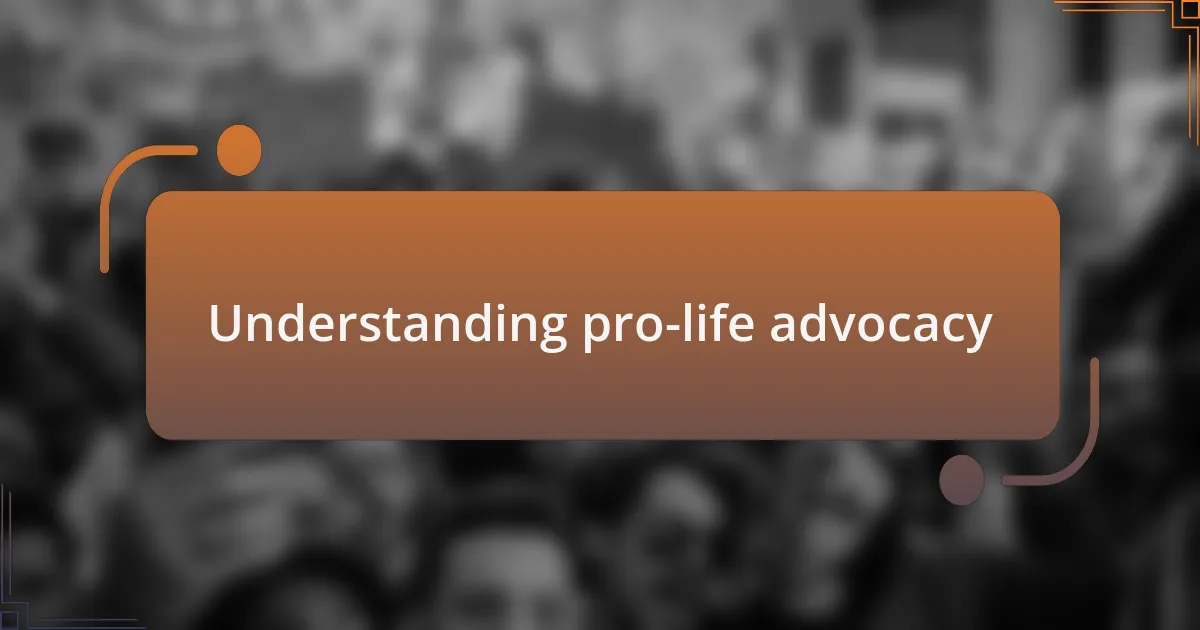
Understanding pro-life advocacy
Pro-life advocacy centers on the belief that every human life is valuable, from conception to natural death. I remember my first debate on this topic; it was eye-opening to hear the passion in both sides of the argument. It made me wonder, how often do we pause to consider the implications of our beliefs on vulnerable lives?
At its core, pro-life advocacy isn’t just about opposing abortion; it’s about promoting a culture that cherishes and supports life in all its forms. I recall meeting a young couple during a pro-life event who shared their journey of adoption after struggling with their decision to start a family. Their story reminded me that advocacy often involves uplifting stories of hope and resilience.
Engaging in pro-life advocacy means fostering dialogue that transcends differences and focuses on shared values of compassion and dignity. Have you ever thought about how your views could impact someone’s reality? I believe that by sharing personal stories and listening deeply, we can create a more profound understanding and empathy between diverse perspectives.
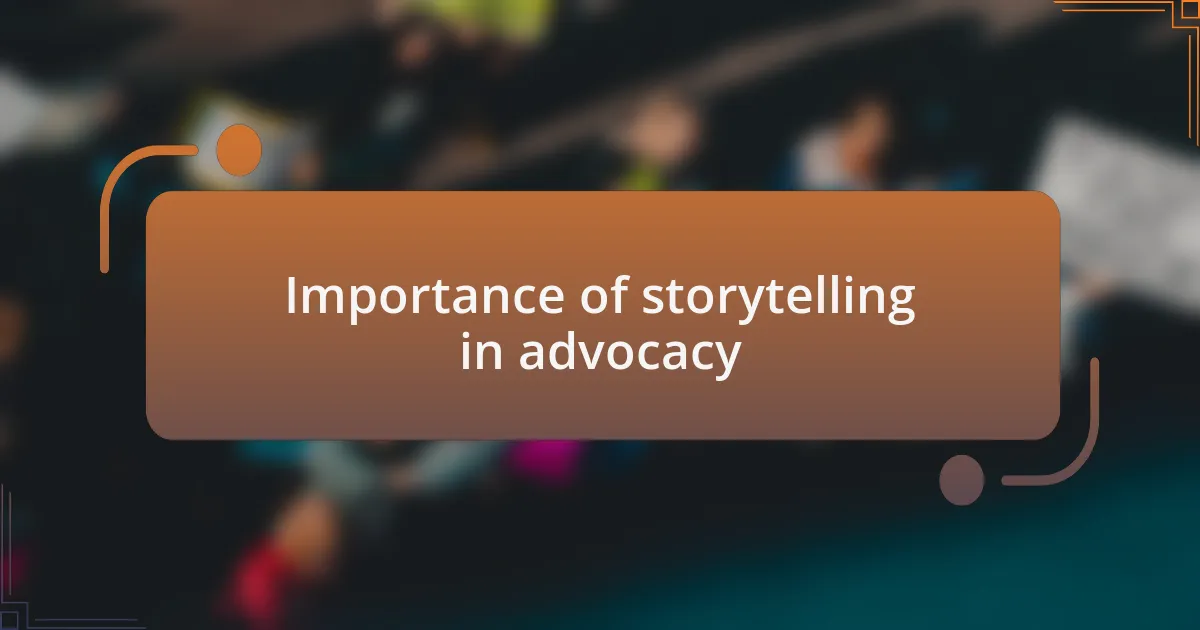
Importance of storytelling in advocacy
Storytelling plays a vital role in advocacy by humanizing statistics and abstract concepts. I remember watching a video of a woman who had chosen life for her child despite incredible odds; her story left a lasting impact on the audience. It’s fascinating how a single narrative can shift perceptions and create a greater understanding of complex issues.
When I share my experiences with pro-life efforts, I often notice how listeners lean in, eager to connect. Personal stories not only help convey passion but also foster an emotional connection that resonates more profoundly than mere facts. This leads me to ponder: isn’t it our responsibility as advocates to present the stories that reveal the heart and soul of our cause?
In essence, effective storytelling allows us to break down barriers and connect with others on a personal level. Each story is unique and can lead to conversations that might not otherwise happen. I often ask myself, how can I use my voice to inspire others to consider the value of life? The answers lie in the compelling stories we share.
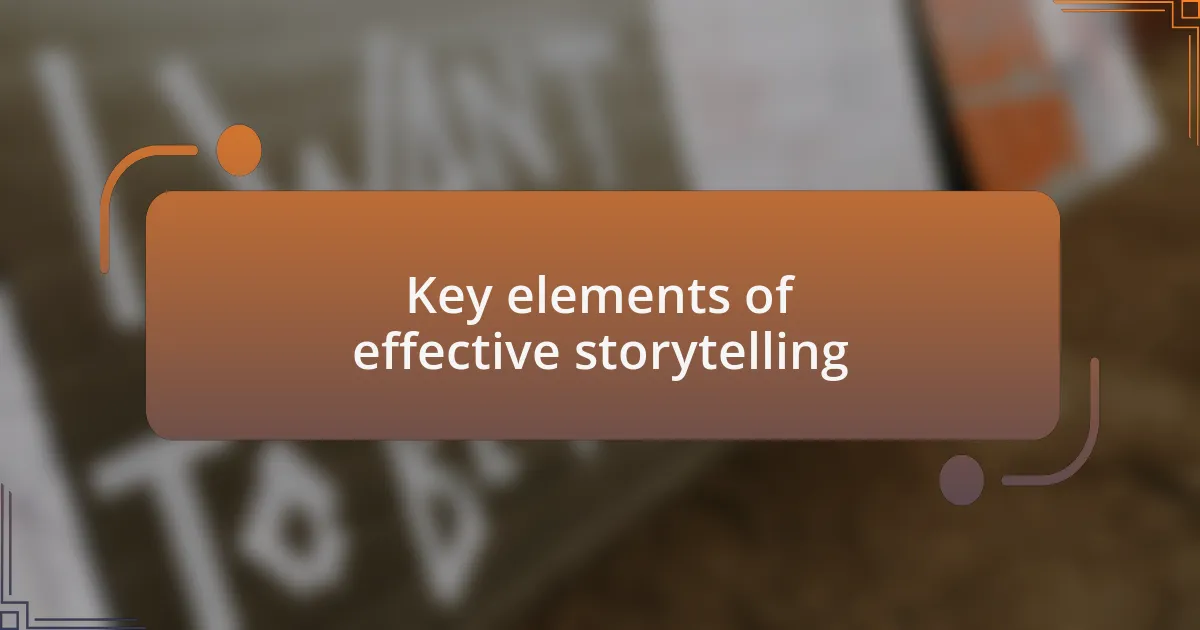
Key elements of effective storytelling
When crafting an engaging story, authenticity is paramount. I’ve witnessed firsthand how sharing my own doubts and triumphs opens the door for honest discussions. For instance, during a community event, I spoke about the struggles I faced in my own pro-life journey. This vulnerability sparked genuine conversations, leaving attendees feeling empowered to express their own doubts, fears, and hopes.
Another essential element is relatability. People often latch onto stories when they see parts of themselves reflected in them. I recall a moment when I shared a simple yet profound interaction with a young mother who felt overwhelmed by her choices. Her feelings mirrored those of many in the audience, and it was that shared connection that drew us closer together. Isn’t it incredible how one relatable narrative can inspire a collective sense of understanding?
Finally, a powerful emotional arc ties it all together. I find that stories with highs and lows resonate deeply, capturing attention and provoking thought. When I told the story of a family who had faced tough decisions and emerged stronger, the emotional journey left a significant impact. It’s those moments of conflict and resolution that not only create a memorable experience but also propel our message forward. How can we ensure our stories reflect this dynamic range of human experience? The answer lies in embracing the full scope of our emotional truths.
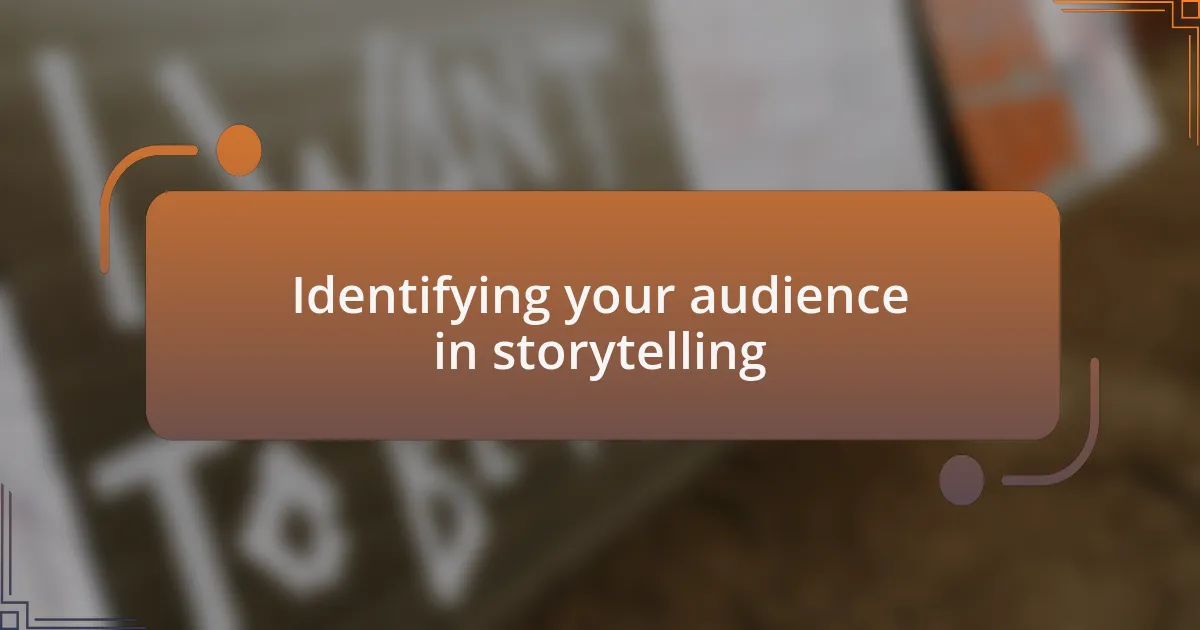
Identifying your audience in storytelling
Understanding who your audience is forms the backbone of effective storytelling. When I crafted a narrative for a workshop aimed at young parents, I zeroed in on their specific challenges and fears regarding pregnancy and parenting. Connecting on that level made my story resonate, and it drew in listeners who could see themselves in the experiences I shared.
It’s also worth considering the diversity within your audience. In one instance, while speaking at a university event, I noticed a mix of students—some pro-life, others not quite sure where they stood. By tailoring parts of my story to address their varying perspectives, I was able to engage both sides in a meaningful dialogue. Isn’t it fascinating how stories can bridge divides when we take the time to acknowledge different viewpoints?
Moreover, the demographics of your audience can greatly influence the tone and style of your storytelling. I remember presenting at a local high school where I adjusted my language to match the youthful vibe of the crowd. By using relatable references and an informal tone, I made the material more accessible and sparked enthusiasm. How can we create that spark in others? Truly knowing your audience is the first step to igniting that passion.
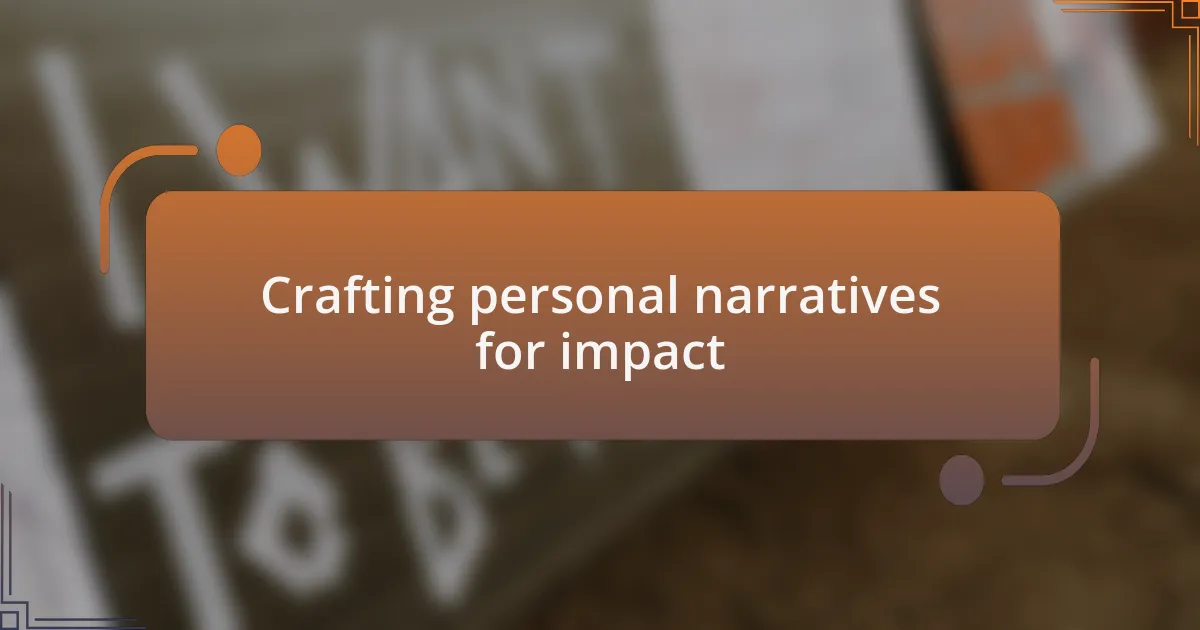
Crafting personal narratives for impact
When it comes to crafting personal narratives, I believe authenticity is key. I recall sharing my own unexpected journey towards pro-life advocacy during a community event. As I opened up about my personal struggles with loss and the transformative revelation that followed, I saw faces in the audience shift from skepticism to engagement. Isn’t it amazing how vulnerability can create a powerful connection?
Selecting the right details is equally vital for impact. In one instance, I described a moment in a hospital room, the sound of a heartbeat echoing in the stillness. That single detail drew listeners in, making the abstract emotional landscape tangible. How often do we overlook the power of sensory details in storytelling? My experience shows that vividly painting a scene allows people to step into the story themselves.
Furthermore, I find that reinforcing a message through repetition can deepen its resonance. In my narratives, I often return to a core lesson about valuing life, weaving it through different stories from my experience. Each time, I tend to see the audience nodding along, as if they’re reinforcing their own understanding. Isn’t it powerful when a simple truth becomes a shared sentiment? Crafting these personal narratives not only conveys a message but also fosters community and solidarity around shared values.